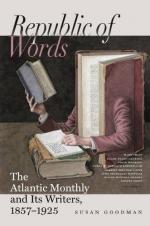[Footnote B: Mr. Sanford quotes from a letter written by a spectator of the panic at Long-Marston Moor, which is so descriptive of what we should expect such a scene to be, that we copy it. “I could not,” says the writer, “meet the Prince [Rupert] until after the battle was joined; and in fire, smoke, and confusion of the day I knew not for my soul whither to incline. The runaways on both sides were so many, so breathless, so speechless, so full of fears, that I should not have taken them for men but by their motion, which still served them very well, not a man of them being able to give me the least hope where the Prince was to be found, both armies being mingled, both horse and foot, no side keeping their own posts. In this terrible distraction did I scour the country; here meeting with a shoal of Scots crying out, ’Wae’s me! We’re a’ undone!’ and so full of lamentations and mourning, as if their day of doom had overtaken them, and from which they knew not whither to fly. And anon I met with a ragged troop, reduced to four and a cornet; by-and-by, a little foot-officer, without a hat, band, or indeed anything but feet, and so much tongue as would serve to inquire the way to the next garrisons, which, to say truth, were well filled with stragglers on both sides within a few hours, though they lay distant from the place of fight twenty or thirty miles.”—See Studies and Illustrations of the Great Rebellion, (p. 606,) the best work ever written on the grand constitutional struggle made by the English against the usurpations of the Stuarts. The letter here quoted was written by an English gentleman, Mr. Trevor, to the best of the Royalist leaders, the Marquis (afterward first Duke) of Ormond.]




